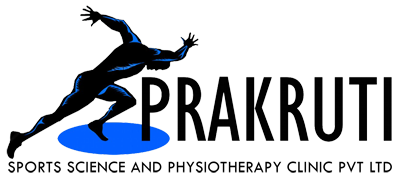Anyone who saw the Federer vs. Murray final at Wimbledon this year will agree that though both seemed well matched in the initial sets, what finally decided their fate was probably Federer’s endurance, the effortless ease with which he crosses the court, and his quick recovery from breath-taking effort.
If you watch them closely you will see that Murray is a “mouth-breather”, playing almost throughout the match with a partially open mouth. Federer instead, plays with lightly pursed lips, breathing mostly through the nostrils, using mouth breathing minimally.
Breathing techniques can affect athletic performance!!
The cells in the body are constantly making energy by combining oxygen (O2) and nutrients in a chemical reaction that releases carbon-di-oxide (CO2). Breathing provides the O2 for this constant requirement and also removes the CO2 produced. During exercise the body requires more energy, and obviously more O2. It also generates and needs to remove more CO2.
Blood constantly carries both these gasses to their destination: O2 to the muscles and CO2 to the lungs for removal. The body circulates the blood with great care, making sure that the organs that are working most receive a constant supply.
How does the body know where to send more blood? There are many systems in place, but the most important one is the tissue CO2 content. As soon as muscle work increases and more CO2 is made and accumulated, the blood vessels in that muscle get stimulated and they dilate to increase blood flow. The increased blood supplies more O2 (the same CO2 trigger stimulates the haemoglobin in blood to release more O2 to the working muscle!) and removes the accumulated CO2, thus increasing the CO2 content of the blood. This in turn stimulates the lungs to breathe faster and deeper to take in O2 and remove this excess CO2.
Now think about what happens when a player continuously breathes out through the mouth: By blowing out through the mouth, an excessive amount of CO2 is lost quickly from the lungs, and hence from the blood and the muscles. With less CO2 in the muscles, the CO2 trigger is lost (in short there is nothing to remind the body that work is going on and the muscles require blood). The blood vessels contract to divert blood to other areas, and the haemoglobin in the blood refuses to release too much O2. The muscles keep working of course, but now without enough O2, leading to a painful accumulation of Lactic acid in the muscle and heralding early fatigue! There is a similar narrowing of blood vessels in the lungs and those supplying the brain. This means less O2 absorbed in the lungs and less O2 supplied to the brain. The result is slight dizziness and disorientation.
Just imagine what even a slight loss of concentration can do in a high level competitive game!
Breathing in and out through the nose means that there is a natural resistance to airflow as it leaves the body. CO2 is not lost quickly, and there is more time for the lungs to absorb O2 and exchange CO2. It also means that the tissues/ muscles that are working get abundant O2 for performance, and there is less Lactic acid build up and less fatigue. Nose breathing also ensures that the lower part of the lungs (Which is full of blood vessels) gets more fresh air, so scope of O2 uptake is high. Interestingly, training while using “nose-breathing” simulates “high-altitude, low oxygen training” and can improve performance.
There is one more reason athletes should breathe mostly through the nose. Mouth breathing is for emergencies and so is also designed to stimulate the body’s “Fight or Flight” response. This means that the heart rate increases, and the body is on alert. While this is OK for situations requiring quick response, chronic mouth breathing means a constant state of mild anxiety and poor response time in crucial situations. Nose breathing on the other hand signals to the body that all is well, calms the mind and body, reduces the resting heart rate, blood pressure, and respiratory rate, increasing endurance and quickening response time in emergencies.
Humans are not exclusive nose breathers. It is essential that we take in a little extra air once in a while from the mouth. It is also essential that we breathe out a little extra CO2 once in a while from the mouth.
But the true champion learns to alternate between the two so subtly that he maintains his blood gas levels at a neutral throughout, ensuring that he remains calm and strong, effortless and effective, quick and accurate as Federer was when he created history on 8th July this year at Wimbledon.







